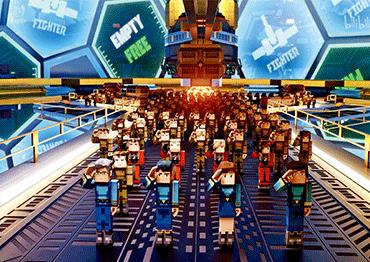“All I’ve been doing these years is introducing The Three-Body Problem series to everyone,” Li Zhenyi told NewsChina.
Until recent years, sci-fi was very niche in China. In high school, no matter how many times Li recommended Science Fiction World magazine and The Three-Body Problem, his classmates were not interested. “They were more into fantasy novels,” Li said.
Li studied abroad in Pau, southwestern France. Indoorsy, he spent most of his free time on the internet, playing online games and watching documentaries about space exploration on Bilibili.
In 2014, one year before The Three-Body Problem won the Hugo Award for science fiction, Li was studying French at a preparatory school. Just like in high school, he felt the strong urge to share the series with his friends. He attempted to translate the first two pages into French. His French teacher pointed out “tons of errors.”
Li is also a fan of Minecraft, an immensely popular open-world game where players use blocks to build anything they can imagine. He then had an idea for an animated video based on The Three-Body Problem. Ingeniously, he used Minecraft to create the background and characters and found actors to dub the voices.
Li uploaded the first episode of his newly produced My Three Body to Bilibili on February 27, 2014. The first episode revolves around the death of Ye Zhetan, a physics professor and father of main character Ye Wenjie, who is killed after he refuses to denounce Einstein's Theory of Relativity during the Cultural Revolution (1966-76).
Initially, the first and second episodes only received roughly 2,000 views and few of comments. But that may be because Bilibili’s administrators only allowed registered users to view it as the first episode mentions the Cultural Revolution.
Now, the 11-episode first season on Bilibili is filled with “bullet comments,” or text-based reactions from viewers that fly across the screen. One of the more popular comments is “keji baozha,” or “technology explosion,” an idea from The Three-Body Problem that says a weak civilization, through an explosive development of technology, can surpass a stronger civilization in a short amount of time. The comparison means My Three Body has seen similar explosive development.
Li created a QQ chat group to recruit like-minded people into the production team. By the end of the first season, the group had more than 1,000 members. Through interviews, Li’s initial production team for My Three Body had 10 people. All were students and Three-Body fans.
Series screenwriter Dr. Baa was among them. At the time, he was studying medicine at a major university. “I joined the team purely out of passion,” Dr. Baa told NewsChina.
When in primary school, Dr. Baa bought a copy of a novel by American sci-fi writer Isaac Asimov from a street vendor. He has been fascinated with sci-fi ever since. He read Liu Cixin’s The Three-Body Problem in high school. It was a transformative experience. “It was like being spiritually reborn. It made me realize that life is not just about basic needs. We can also care about broader and grander issues like the fate of humanity,” he said.

 Old Version
Old Version
